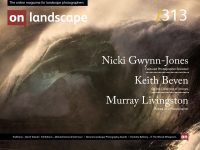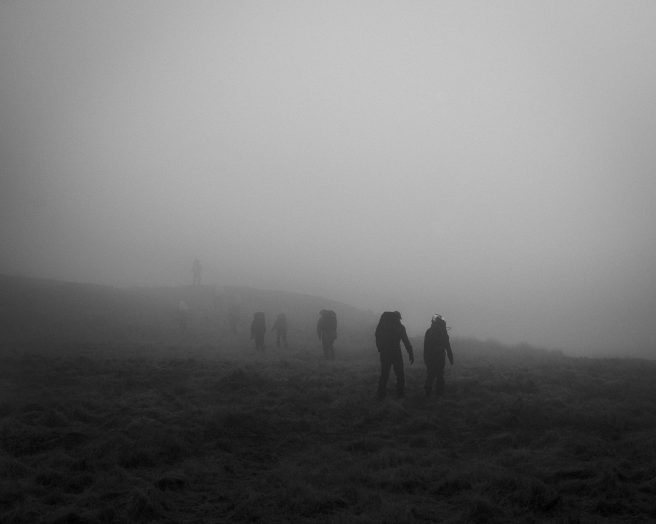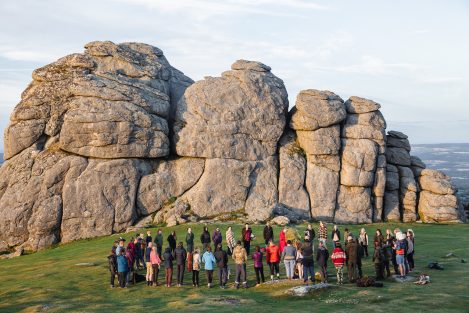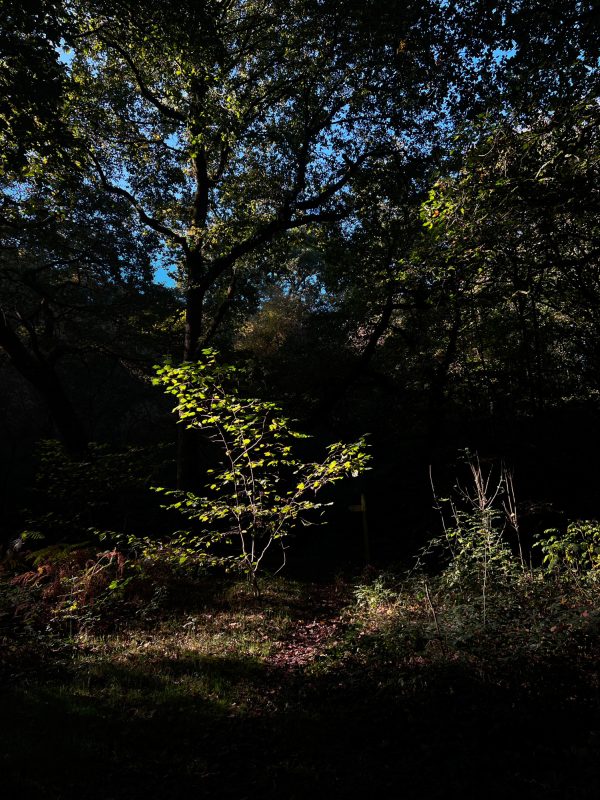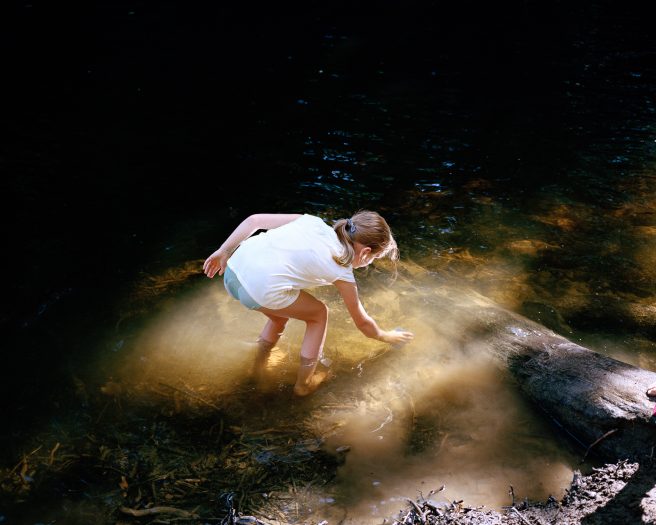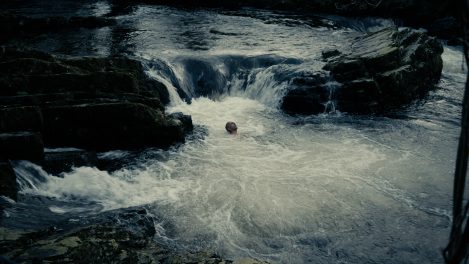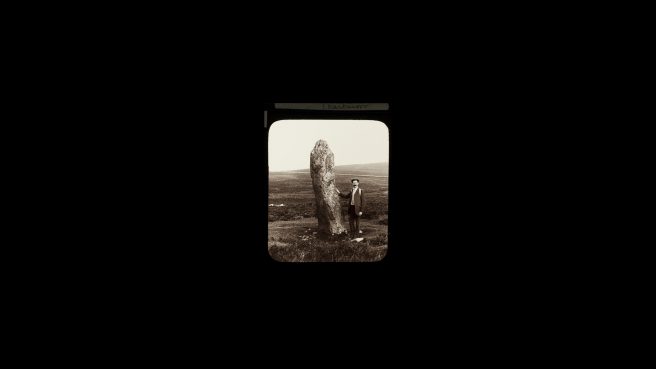A major new exhibition opening at the Royal Albert Memorial Museum, Exeter
Kate Best
Kate Best has been Consultant Curator for Dartmoor: A Radical Landscape. An independent curator based in Somerset, other recent projects include Trish Morrissey: Autofictions. Twenty years of photography and film, Serlachius Museums, Finland, Impressions Gallery, Bradford and Museum of Photography Ireland, 2023-24; and A Rose is a Rose is a Rose (Brendan Barry, Feral Practice, John Newling, Sophy Rickett and Marjolaine Ryley), Hestercombe Gallery, Somerset, 2022. Kate was previously Curator of Photographs at the Victoria and Albert Museum, London
A major new exhibition opening at the Royal Albert Memorial Museum, Exeter this autumn explores ways in which the landscapes of Dartmoor have inspired artists working in photography since 1969.
Previous exhibitions have explored how this ‘wild and wondrous region’ has attracted artists over the centuries, often working within the traditions of the picturesque or depicting versions of a rural idyll. Dartmoor: A Radical Landscape looks at ways artists working on Dartmoor from the late 1960s to the present day have used photography to create new representations of the moor, pushing the boundaries of the medium, while also being rooted in this unique landscape. Through the work of twenty artists working across photographic genres and techniques, the exhibition also highlights the strength of contemporary photography in the south west, where most of the artists in the exhibition, including commissioned artists Alex Hartley and Ashish Ghadiali, are based.
Dartmoor became a National Park in 1951, since when it has attracted millions of visitors to enjoy large tracts of open access and public rights of way. The exhibition opens with conceptual artworks from the 1960s by Richard Long, Nancy Holt and Marie Yates who used photography to record their walks on Dartmoor and ephemeral sculptures or performances they made there. These important early examples of Land Art, that took the artist out of the studio and into the landscape, placed Dartmoor at the centre of international developments in contemporary art and continue to inspire artists to make work here, including Long, who has worked on Dartmoor throughout his career.
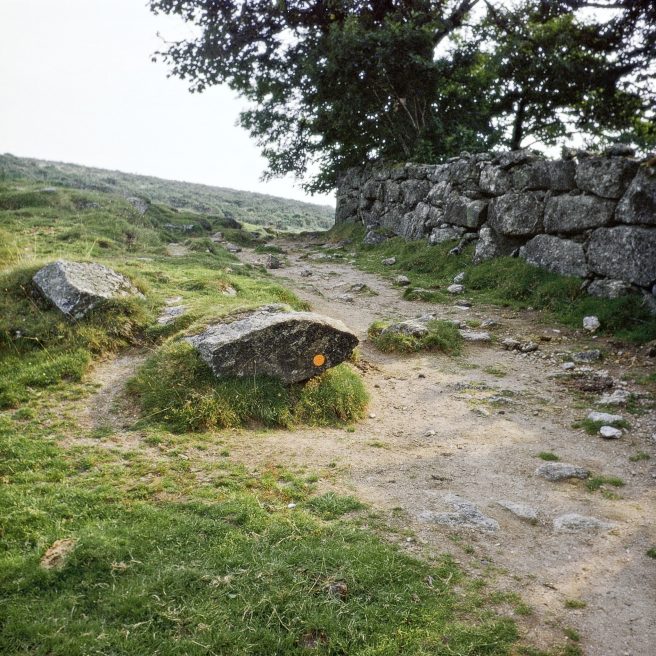
Nancy Holt, Trail Markers, 1969, printed 2012 © Holt/Smithson Foundation / Licensed by VAGA at Artists Rights Society, New York. Courtesy Sprüth Magers.
Walking across the moor with a camera is a feature of much of the work on display. Chris Chapman moved to Dartmoor in 1975 after graduating from the then recently-established Documentary Photography course at Newport, run by David Hurn, and has spent over fifty years recording rural life and customs in film and photography. For many years, he would lead his friend James Ravilious on photographic expeditions on the moor, and the exhibition includes a selection of Ravilious’ lesser-known Dartmoor landscapes, including studies of Wistman’s Wood made on a walk with Chapman.
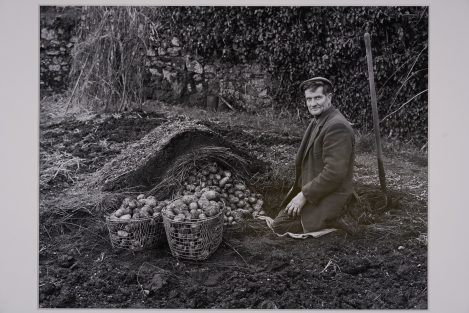
Chris Chapman, Joe White and his ‘teddie’ pit, Batworthy Farm, Chagford, 1982 © Chris Chapman / Victoria and Albert Museum, London.
More recently, Devon-based photographer Robert Darch, who also studied at Newport before moving to the southwest, has accompanied teenagers on the arduous Ten Tors expeditions, the annual rite of passage where students from schools in Devon and beyond experience both the freedom and the challenges of navigating the Moor’s wild expanses.
Since the 1800s these open spaces have also been used for military training. Nicholas JR White’s series The Militarisation of Dartmoor investigates the Moor’s long and complex relationship with the British Army, who organise the Ten Tors expeditions. Finding correspondence between military structures and archaeological sites, the series identifies militarisation as part of Dartmoor’s cultural heritage, while also drawing attention to ways in which the natural environment is shaped - and damaged - by human intervention and occupation.
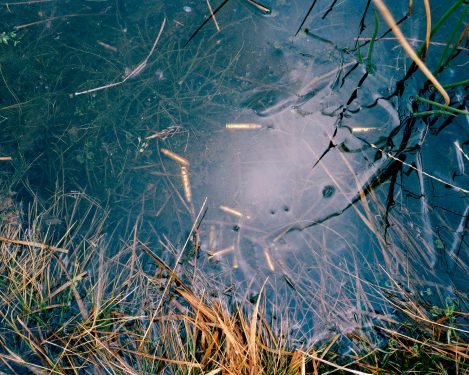
Nicholas JR White, Bullet Casings, 2013, from The Militarisation of Dartmoor series © Nicholas JR White.
As much of the work in the exhibition explores, Dartmoor draws visitors as a place of freedom and wilderness, but it is also a contested landscape and a microcosm of urgent issues facing Britain today. Concerns about the interconnected ecological crisis and climate breakdown, and the decline of biodiversity, as well as who has access to the land, are explored throughout the exhibition.
David Spero’s photographs of the Steward Community Woodland, which he documented from 2004 to 2019 as part of his celebrated series Settlements, bear witness to an attempt to establish a way of life that would work in harmony with nature, based on the principles of permaculture, but that ultimately was rejected by the National Park’s planning system.
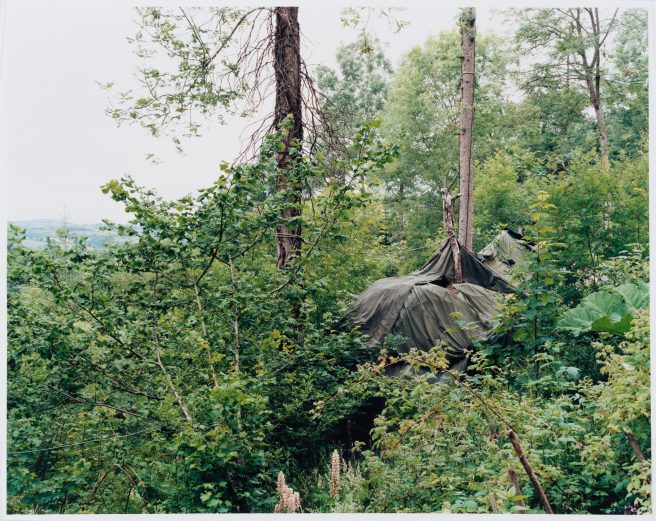
David Spero, ’The Longhouse’ communal space and workshop (view from old kitchen path), 2004 © David Spero / Victoria and Albert Museum, London.
Fern Leigh Albert was a member of the Steward Community Woodland prior to studying photography in London. Wild Wood, her own long-term study of off-grid living enabled her to, as she says; ‘make significant connections to the local landscape’, which she continues to explore through her practice. Her current series Wild Campers, featured in the exhibition, charts the ongoing protest movement that has developed in recent years in response to the struggle to retain the right to camp on Dartmoor and which will once again be mobilised this autumn when the case for and against wild camping is heard in the Supreme Court.
Other artists who have established studios and darkrooms on or near to Dartmoor explore environmental concerns in their work. Alongside her abstract, camera-less practice, Jo Bradford has been documenting a small part of Dartmoor near her home in her ongoing series Cloud Forest. The works are a record of the moor's temperate rainforest, a globally rare habitat that she has explored for more than ten years. Coated in a beeswax seal, they are also part of Bradford’s experiments in developing more sustainable photographic techniques in her off-grid studio.
Susan Derges’ three large-scale Eden photograms, shown together here for the first time thanks to major loans from the Victoria and Albert Musuem, London, were made by submerging photographic paper in the River Taw at night and exposing it to flashlight during the night’s darkness. Describing the title of the series, Derges says it, ‘also represents to me an ideal - of belonging and participating within the natural functioning of the world, rather than looking on from the perspective of an exceptional or privileged position outside of it’.
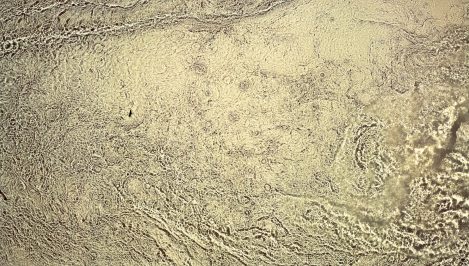
Susan Derges, Eden 6, 2004 © Susan Derges / Royal Albert Memorial Museum and Art Gallery. Purchased with assistance from the Arts Council England / V&A Purchase Grant Fund, the Friends of RAMM, and private donors.
Dartmoor’s fast-flowing rivers also feature in works Siân Davey and commissioned artist Ashish Ghadiali. Davey’s ongoing series River records communities along the River Dart, as it carries its peaty waters towards the south coast. As with Derges’ photograms, these images remind us of the vitality of our waterways and our connection with them, and the ways in which they are threatened by pollution and climate change.
Ghadiali’s two-screen film installation Can you tell the time of a running river? is from his ongoing series The Cinematics of Gaia and Magic. RAMM invited Ghadiali to create a new moving image work specifically for this exhibition inspired by its collections of Dartmoor materials on display in the museum and in its stores. Ghadiali chose to work with RAMM’s extensive collection of lantern slides depicting stone rows, circles and standing stones on Dartmoor.
Looking through these images, many taken by T.A Falcon for his 1900 publication Dartmoor Illustrated and projected as lantern slides for illustrated lectures performed at the museum, Ghadiali was moved by ways in which emerging technologies (for photographic reproduction and projection) were used to share images of ancient monuments and landscapes; ways of seeking a connection to the landscape that the artist considers vital for the environmental challenges we face today.
The Museum’s lantern slide collections have also informed new work by Alex Hartley, whose installation The Summoning Stones is the result of an open call commission for the exhibition. Hartley lives in Devon and frequently climbs, walks and camps on Dartmoor. Seeking to make a connection between the magic of photography and the magic of Dartmoor, he has inserted his own photographs of standing stones into photovoltaic panels in new works that invite the viewer to participate in forms of energy transfer and to perhaps experience the same ‘vibrant energy’ in the gallery as experienced when standing in the middle of a stone circle on the moor.
Garry Fabian Miller’s The Darkroom’s Fading Presence also expresses the intense energy, colour and light that he has experienced in the landscapes in an imagined circle around his Dartmoor home and darkroom, throughout the seasons. One of the final camera-less photographs – or luminograms – made in his darkroom using cibachrome chemistry, the work references late summer gorse, perhaps viewed through mist. Fabian Miller describes how he absorbs and carries ‘exposures’ from walks on the Moor, and creating a garden there, which are then transcribed into his work, creating ‘pictures that came from moments in this place released onto the paper’s surface in the darkness’. Newly-acquired by the RAMM, the work will be shown alongside a group of Fabian Miller’s Dartmoor works on loan from the V&A.
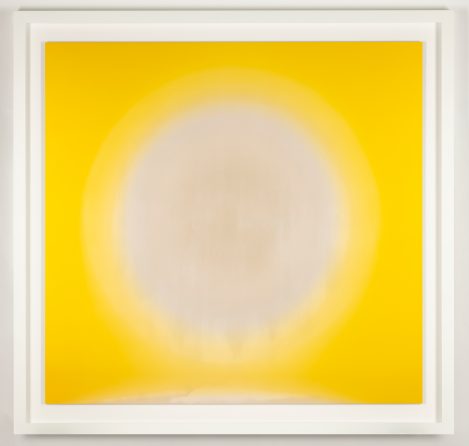
Garry Fabian Miller, The Darkroom’s Fading Presence, 2020 © Garry Fabian Miller / Royal Albert Memorial Museum and Art Gallery. Purchased with assistance from the Arts Council England / V&A Purchase Grant Fund, Art Fund, Dartmoor Preservation Association, RAMM Development Trust, Friends of RAMM, RAMM Patrons and private donors.
Exhibition Details
Dartmoor: A Radical Landscape (Sat 19 Oct to Sun 23 Feb 2025) is part of the Contemporary Art Programme funded by Arts Council, England at the Royal Albert Memorial Museum and Art Gallery in Exeter. It is curated by Lara Goodband, Contemporary Art Curator at RAMM, with Kate Best as consultant curator. Dartmoor Preservation Association is a lead partner for the exhibition.
- Nancy Holt, Trail Markers, 1969, printed 2012 © Holt/Smithson Foundation / Licensed by VAGA at Artists Rights Society, New York. Courtesy Sprüth Magers.
- Chris Chapman, Joe White and his ‘teddie’ pit, Batworthy Farm, Chagford, 1982 © Chris Chapman / Victoria and Albert Museum, London.
- Robert Darch, Beardown Tor, 2018, from The Ten Tors series © Robert Darch.
- Nicholas JR White, Bullet Casings, 2013, from The Militarisation of Dartmoor series © Nicholas JR White.
- David Spero, ’The Longhouse’ communal space and workshop (view from old kitchen path), 2004 © David Spero / Victoria and Albert Museum, London.
- Fern Leigh Albert, Circle of Protest, Haytor, 2023 © Fern Leigh Albert.
- Jo Bradford, Detail from Cloud Forest, 2011- ongoing, © Jo Bradford .
- Susan Derges, Eden 6, 2004 © Susan Derges / Royal Albert Memorial Museum and Art Gallery. Purchased with assistance from the Arts Council England / V&A Purchase Grant Fund, the Friends of RAMM, and private donors.
- Siân Davey, Untitled, 2016, from The River Series © Siân Davey; courtesy Michael Hoppen Gallery.
- Ashish Ghadiali, Cinematics of Gaia and Magic 5, 2024 © Ashish Ghadiali.
- Ashish Ghadiali, Slide 2, 2024 © Ashish Ghadiali.
- Alex Hartley, Summoning Stones, 2024 © Alex Hartley.
- Garry Fabian Miller, The Darkroom’s Fading Presence, 2020 © Garry Fabian Miller / Royal Albert Memorial Museum and Art Gallery. Purchased with assistance from the Arts Council England / V&A Purchase Grant Fund, Art Fund, Dartmoor Preservation Association, RAMM Development Trust, Friends of RAMM, RAMM Patrons and private donors.

